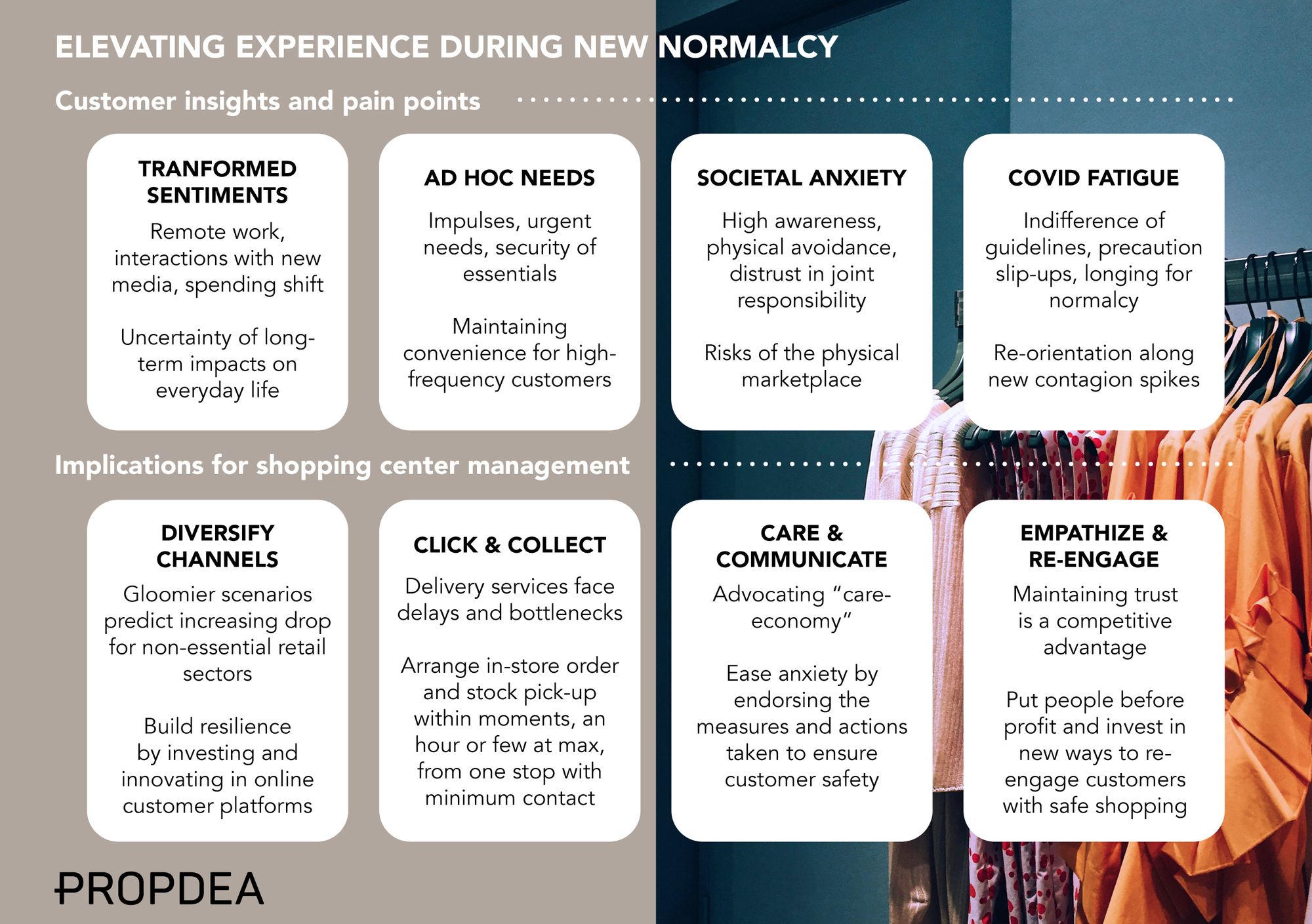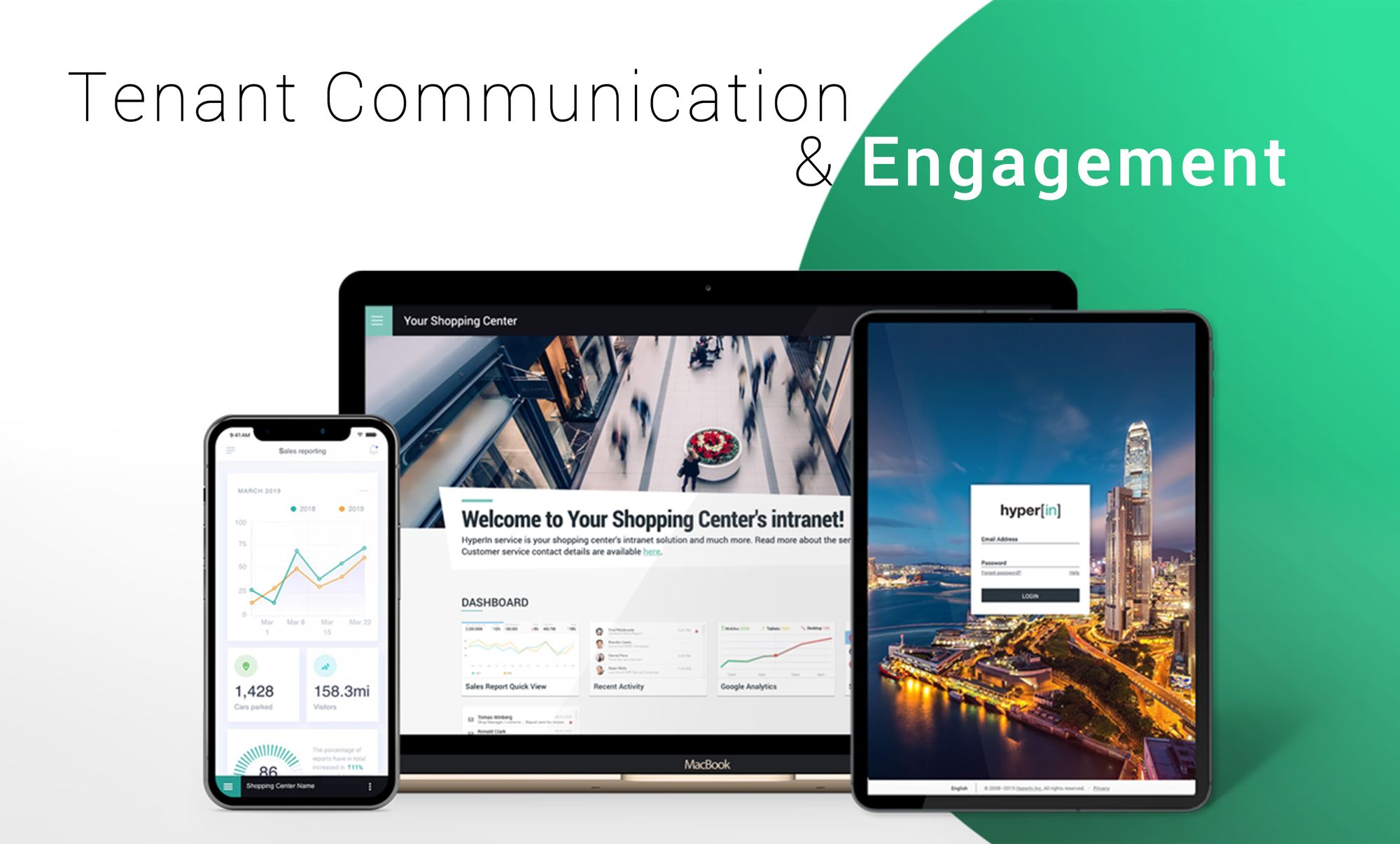Retail Real Estate User Engagement During ”New Normalcy”

The 2020 pandemic is predicted to have long-lasting effects on how we work, do business and organise our everyday lives. The journey towards reopening got us reflecting: how does the retail real estate industry recover and evolve from here? One fundamental curiosity is how to respond to the transformed expectations of shopping center users (i.e. tenants and customers). We identify this next chapter as “the new normalcy”.
Returning to spend time at shopping centers has been a way for people to maintain some sense of normalcy. However, if lockdowns are forced to resume, digitally savvy customers will waste no time jumping on the e-commerce bandwagon again. Likewise, retailers continue to adopt new digital tools to attract shoppers. Tenants expect shopping center operators to diversify their digital practices and invest in omni-channel strategy to engage with customers and boost sales.
Individual brands have demonstrated creative ways in exploiting their direct-to-customer strategies. While shopping center operators retreated to manage tenant-permanence and provide necessary safety measures for the pandemic-fatigued public. Shopping center-led innovations were hardly declared, if at all.
Re-mapping the customer journey
Customer experience -centrism has been emphasised in retail real estate development for quite some time now. Under current circumstances, the customer journey retail real estate traditionally caters for is disrupted. To remain viable, the challenges center not only around how well shopping centers respond to customer safety but rather how they continue to utilise the physical-digital-spatial sphere in facilitating wary customers. The picture below presents some key insights for shopping centers to elevate customer experience during this new normalcy.
"Elevating experience during the new normalcy."
As a retail real estate pacemaker, Propdea focuses on providing proactive and immediate-mobilising solution models for clients to build resilience and reach their investment targets during these uncertain times. Fortunately, there are a number of tools and tactics available for shopping center operators to engage with their users. Next, hear from Hyperin Inc. on how communication is key in nurturing both customer and tenant trust.

Tools of engagement
Spring 2020 highlighted the importance of empathy. The common realisation was that investing in tenant communication and empathising their distress increases tenant engagement and commitment to the landlord. However, tens or hundreds of tenants per property understandably overload managers. Thus, appropriate tools to support this relationship are crucial.
After a shift in marketing tone, the new normalcy pushes us to get back to more aggressive campaigning to keep customers engaged. How? First, participating tenants in campaign planning is advised, involving tenants’ input in designing customer journeys around them. Second, as campaigns now have shorter reaction time windows, processes must be adjusted accordingly to enable quick and dynamic operations.
Understanding the performance of campaigns requires agile and well-integrated reporting tools, observing sales revenue, OCR, and other key indicators. Reviewing the results with tenants is also advised to further boost commitment. Landlords must prepare for shorter reporting cycles to stay updated with the day-to-day business of their tenants. Here HyperIn tenant engagement tools are valuable companions.

” The ones that have been investing in their tenant communication processes have been able to deliver good results in tenant engagement.”
Emphasis on demonstrating safe shopping will stay on the agenda for months to become. Shopping centers have a pool of channels to innovate with such as websites, interactive screens on the floor level, and mobile applications. This physical-digital-spatial interaction and experience scope offers a unique advantage for shopping centers in navigating against the growing e-commerce landscape.
The new normalcy benefits from solutions like HyperIn CONNECT in re-connecting the shopping center customer journey touch-points. The HyperIn CONNECT mobile application, website, and digital wayfinding solutions are your daily tools in communicating with customers and facilitating customer experience.
This is a publication featured in the Retail People Magazine. You can check the full issue here.
Authors:
Business Designer, Propdea Oy – Researcher in User-Centered Marketplace Design at Aalto University, Finland
Anna Salo-Toyoki
VP, Business Development, HyperIn – Founder of PropTech Finland
Hannu Käki
